Intel 9th Gen Core Processors All the Desktop and Mobile 45W CPUs Announced AnandTech
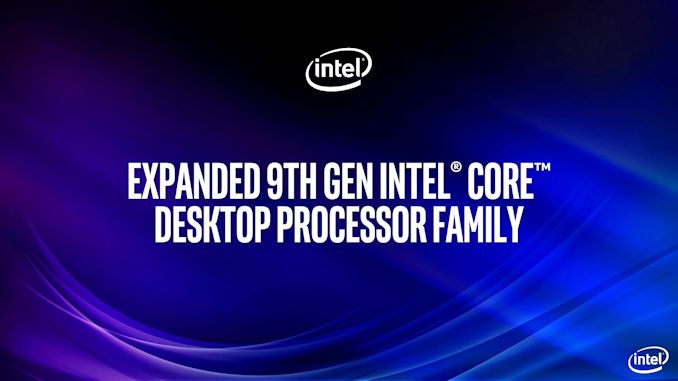
How Intel has launched its range of 9th era processors has been an odd and awkward one. Despite the release of the 8-middle 9900K ultimate 12 months, we still haven’t had all of the decrease end processors in the family honestly be announced, despite numerous leaks within the meantime. That all adjustments nowadays because the corporation is giving out a complete listing of processors, with availability quickly to observe. There are still question marks approximately Intel’s ability to fulfill the brand new expanded demand, so it will likely be exciting to look if Intel can nonetheless offer the lower frequency and decrease center matter hardware in quantity.
Today’s release is available in two components: Desktop and Mobile. Desktop is in this web page, Mobile is on the next page.
Intel 9th Generation Core Desktop Processors: 34 CPUs
Dubbed ‘Coffee Lake Refresh’, the ninth technology of Intel’s Core CPU product line is an immediate refresh of its 8th generation Coffee Lake hardware, with minor enhancements which include a better thermal interface on the high give up processors, support for up to eight cores, and newer chipsets with included USB 3.1 Gen2 (10Gbps) and CNVi-enabled Wi-Fi. The hardware is still essentially the unique 6th Gen Skylake microarchitecture below, from2019, but constructed on Intel’s cutting-edge 14nm procedure variant, so one can extract additional frequency and performance, and with extra cores at the high-quit.
Intel sub-divides its CPUs in two ways. First, by way of the Core i-series number:
- Core i9: Eight cores, 9900 with HT, 9700 with out HT
- Core i7: Eight cores, no HT
- Core i5: Six Cores, no HT
- Core i3: Four Cores, no HT
- Pentium Gold: Two Cores, HT
- Celeron: Two Cores, no HT
Then, each processor may have an extra suffix associated with sure capabilities which can be enabled or disabled:
- K = Overclockable
- KF = Overclockable with No Integrated Graphics
- No Suffix = Standard CPU, 54-65W TDP, Integrated Graphics
- F = No Integrated Graphics
- T = Low Power, 35W TDP
The concept here is that the call of the processor must let you know all which you need to understand about what the processor has to be had. Aside from the atypical distinction within the Core i9 section, it’s commonly all there.
New for the 9th technology CPUs is the F suffix, that means no integrated graphics. We’ve commented on those elements before, but in the end it might appear that Intel’s manufacturing ability to yield cores is higher than its ability to yield portraits at the suitable frequencies, so with a view to maximize $ per rectangular millimeter, it's far now offering photographs-unfastened versions of its famous CPUs. These components are priced the identical with or without pictures, which just is going to reveal you the way lots Intel values its modern pix implementation. As continually, it will likely be interesting to look how plenty Intel can yield among F variations and ordinary processors.
Regarding ordinary processors and the lower strength 35W TDP ‘T’ processors, the main variant here is inside the base frequency. It need to be mentioned that Intel’s TDP rankings are only legitimate at the bottom frequency of the processor, so even if the CPU has a high faster, its top strength consumption all through faster may be plenty higher than the TDP price (Intel defines a Power Limit 2 fee that's often 25% higher, but motherboard manufacturers usually forget about this). This is an characteristic given completely by means of Intel CPUs, exacerbated with the aid of the motherboard manufacturers going past specifications, and we’ve distinct the problem in preceding articles. Click the follow hyperlink to find out more:
Each CPU has a certified reminiscence support of DDR4-2666 for Core i5 and above, or DDR4-2400 for Core i3 and below. This manner that at the same time as processors may support better, Intel does no longer make any assurances as to whether it's going to work. All the processors are aligned with Intel’s Optane H10 garage solution, which changed into announced yesterday. Support with H10 is sort of arbitrary, as H10 has to work with other CPUs as nicely.
We’re going to go through every of the sub-divisions, hopefully making the naming and numbering clearer.
| Intel ninth Generation Core CPUs Core i9 | |||||||||
| AnandTech | Cores Threads | Base Freq | Turbo Freq | L3 Cache | DDR4 | IGP | TDP | Price (1ku) | |
| i9-9900 | K | 8C / 16T | 3.6 GHz | 5.0 GHz | 16 MB | 2666 | Y | 95 W | $488 |
| i9-9900 | KF | 8C / 16T | 3.6 GHz | 5.0 GHz | 16 MB | 2666 | 95 W | $488 | |
| i9-9900 | 8C / 16T | 3.1 GHz | 4.9 / 5.0* | 16 MB | 2666 | Y | 65 W | $439 | |
| i9-9900 | T | 8C / 16T | 2.1 GHz | 4.4 GHz | 16 MB | 2666 | Y | 35 W | $439 |
| i9-9700 | K | 8C / 8T | 3.6 GHz | 4.9 GHz | 12 MB | 2666 | Y | 95 W | $374 |
| i9-9700 | KF | 8C / 8T | 3.6 GHz | 4.9 GHz | 12 MB | 2666 | 95 W | $374 | |
| * i9-9900 supports Intel Thermal Velocity Boost for +100 MHz Turbo |
There are two fundamental numbers inside the Core i9 segment, the 9900 own family with HyperThreading, and the 9700 circle of relatives without. Both the i9-9900K and i9-9700K have corresponding F versions with out included graphics, in addition to 35W ‘T’ variations which have lots lower base frequencies.
Interestingly, Intel’s official documentation lists the Core i9-9900 as a 4.9 GHz processor, or 5.0 GHz while ‘Intel Thermal Velocity Boost’ is enabled and legitimate. If you’re wondering what Intel Thermal Velocity Boost is, so have been we – Intel has never specifically cited it in any preceding assembly or briefing, and it unexpectedly appears in a processor listing slide. The slide honestly lists the rapid as 5.0 GHz*, with the asterisk leading to a footnote which clarifies that it's miles 5.0 GHz whilst ITVB is enabled. It’s very sneaky how they’ve executed that, and easy to miss if you are simply skimming the spec sheet. Also doubling down at the awkwardness, the Core i9-9900 is the best processor inside the complete stack that has this option. Why simply this one? I can wager the PR solution, but the real solution? Is Intel just trialling a function? How is this selection going to be interpreted with the aid of the motherboard producers? Are they going to butcher this one as properly? Intel simply opened a can of very unique worms that it pulled from a box it didn’t tell us approximately.
| Intel ninth Generation Core CPUs Core i7 | |||||||||
| AnandTech | Cores Threads | Base Freq | Turbo Freq | L3 Cache | DDR4 | IGP | TDP | Price (1ku) | |
| i7-9700 | 8C / 8T | 3.0 GHz | 4.7 GHz | 12 MB | 2666 | Y | 65 W | $323 | |
| i7-9700 | F | 8C / 8T | 3.0 GHz | 4.7 GHz | 12 MB | 2666 | 65 W | $323 | |
| i7-9700 | T | 8C / 8T | 2.0 GHz | 4.3 GHz | 12 MB | 2666 | Y | 35 W | $323 |
Moving onto the Core i7 components, and we immediately have a hassle. Here Intel has indexed three Core i7-9700 CPUs. But wait, didn’t we've i9-9700 components with the Core i9 family? Yes, we did. Intel has decided (or as a substitute, someone at Intel desires to confuse everybody) that the 9700K processors should be Core i9, at the same time as the non-K components should be Core i7. The differences among the i9 and i7 variations are simply frequency and TDP, at the same time as we still have 8 cores with out HT, and I can absolutely recognize the desire to have a distinct separation between the 2, however that is in the long run a shot at each obfuscation and confusion for partners, OEMs, customers, and fans of Intel’s product line. Perhaps to make subjects even worse, we've Core i9-K. We don’t have Core i7-K. We have Core i5-K, and Core i3-K. It makes me wonder if this naming and segmentation strategy is ever exceeded thru a focus group past subsets of engineers or advertising.
| Intel ninth Generation Core CPUs Core i5 | |||||||||
| AnandTech | Cores Threads | Base Freq | Turbo Freq | L3 Cache | DDR4 | IGP | TDP | Price (1ku) | |
| i5-9600 | K | 6C / 6T | 3.7 GHz | 4.6 GHz | 9 MB | 2666 | Y | 65 W | $262 |
| i5-9600 | KF | 6C / 6T | 3.7 GHz | 4.6 GHz | 9 MB | 2666 | 65 W | $262 | |
| i5-9600 | 6C / 6T | 3.1 GHz | 4.6 GHz | 9 MB | 2666 | Y | 65 W | $213 | |
| i5-9600 | T | 6C / 6T | 2.3 GHz | 3.9 GHz | 9 MB | 2666 | Y | 35 W | $213 |
| i5-9500 | 6C / 6T | 3.0 GHz | 4.4 GHz | 9 MB | 2666 | Y | 65 W | $192 | |
| i5-9500 | F | 6C / 6T | 3.0 GHz | 4.4 GHz | 9 MB | 2666 | 65 W | $192 | |
| i5-9500 | T | 6C / 6T | 2.2 GHz | 3.7 GHz | 9 MB | 2666 | Y | 35 W | $192 |
| i5-9400 | 6C / 6T | 2.9 GHz | 4.1 GHz | 9 MB | 2666 | Y | 65 W | $182 | |
| i5-9400 | F | 6C / 6T | 2.9 GHz | 4.1 GHz | 9 MB | 2666 | 65 W | $182 | |
| i5-9400 | T | 6C / 6T | 1.8 GHz | 3.4 GHz | 9 MB | 2666 | Y | 35 W | $182 |
The Core i5 range is pretty conventional, proposing the 9600, 9500, and 9400 elements with some versions. The 9600 gets a K, a KF, and a T, whereas the 9500/9400 gets an F and a T only. Interestingly, the K elements right here are the simplest overclockable members at the stack that have a TDP of 65W, in comparison to 91W or 95W. These components offer extended base frequency (3.7 GHz vs 3.1 GHz), even though have a tray pricing (1k unit buy) of $49 higher than the non-overclockable parts.
| Intel ninth Generation Core CPUs Core i3 | |||||||||
| AnandTech | Cores Threads | Base Freq | Turbo Freq | L3 Cache | DDR4 | IGP | TDP | Price (1ku) | |
| i3-9350 | KF | 4C / 4T | 4.0 GHz | 4.6 GHz | 8 MB | 2400 | 91 W | $173 | |
| i3-9320 | 4C / 4T | 3.7 GHz | 4.4 GHz | 8 MB | 2400 | Y | 62 W | $154 | |
| i3-9300 | 4C / 4T | 3.7 GHz | 4.3 GHz | 8 MB | 2400 | Y | 62 W | $143 | |
| i3-9300 | T | 4C / 4T | 3.2 GHz | 3.8 GHz | 8 MB | 2400 | Y | 35 W | $143 |
| i3-9100 | 4C / 4T | 3.6 GHz | 4.2 GHz | 6 MB | 2400 | Y | 65 W | $122 | |
| i3-9100 | F | 4C / 4T | 3.6 GHz | 4.2 GHz | 6 MB | 2400 | 65 W | $122 | |
| i3-9100 | T | 4C / 4T | 3.1 GHz | 3.7 GHz | 6 MB | 2400 | Y | 35 W | $122 |
The Core i3 additionally follows its conventional scheme, with the 9350, 9320, 9300, and 9100 components, the latter having slightly decrease L3 cache according to middle and are priced for that reason. The 9350 is available as a K or a KF, but no fashionable SKU: alternatively, customers could have the 9320. Only the 9300 and 9100 get low power T variations, and pricing in the Core i3 line is strong compared to the previous era. It ought to be stated that the Core i3 parts (and under) only have certified guide up to DDR4-2400, rather than DDR4-2666 supported by using the Core i5/i7/i9 processors.
I must factor out that Intel continues to be now not imparting a quad-middle for under $one hundred to compete with AMD’s Ryzen 3 2200G. The APU from AMD has four full Zen cores together with Vega photographs, dismantling any snap shots workload in comparison to Intel’s presenting, and it comes bundled with a good 65W cooler, whereas it’s a question mark sometimes if Intel’s CPUs include a cooler (that allows you to meet tray pricing, likely not). Intel’s cheapest quad-core is the i3-9100, that is possibly to offer better single threaded performance, however might be 30% extra high priced at retail. If you can discover one, this is – there are 2200G components to be had nearly anywhere.
| Intel ninth Generation Core CPUs Pentium Gold and Celeron | |||||||||
| AnandTech | Cores Threads | Base Freq | Turbo Freq | L3 Cache | DDR4 | IGP | TDP | Price (1ku) | |
| G5620 | 2C / 4T | 4.0 GHz | - | 4 MB | 2400 | Y | 54 W | $86 | |
| G5600 | T | 2C / 4T | 3.3 GHz | - | 4 MB | 2400 | Y | 35 W | $75 |
| G5420 | 2C / 4T | 3.8 GHz | - | 4 MB | 2400 | Y | 54W 58W | $64 | |
| G5420 | T | 2C / 4T | 3.2 GHz | - | 4 MB | 2400 | Y | 35 W | $64 |
| G4950 | 2C / 2T | 3.3 GHz | - | 2 MB | 2400 | Y | 54 W | $52 | |
| G4930 | 2C / 2T | 3.2 GHz | - | 2 MB | 2400 | Y | 54 W | $42 | |
| G4930 | T | 2C / 2T | 3.0 GHz | - | 2 MB | 2400 | Y | 35 W | $42 |
| * G5420 may be derived from dual die (54W) or quad die (58W), see below |
The Pentium Gold/Celeron components bring up the less expensive cease of the spectrum, from $forty two up to $86. They are all twin cores, with the Pentium Gold CPUs helping HyperThreading. The Celeron components also have the smallest quantity of L3 cache consistent with core, with simplest 1 MB. The odd CPU from the bunch is the Pentium Gold G5420, which is available in 54W and 58W versions. Intel has executed this before: one version of this CPU is derived from a twin center die (54W), whilst the opposite is a reduce down quad-middle variation (58W). In the past those two distinct fashions have had extraordinary element numbers, so customers might be capable of song which one they get. If there isn’t a part number indexed on the retailer, then it’s a pot luck primarily based on Intel’s binning and what they have in inventory.
For those processors, customers will must pair them with a 300-series chipset. There is no new 300-collection chipset release nowadays, so customers can depend on the Z390/Z370/Q370/B360/H350/H310 models already inside the market. Depending on the model chosen, they may have some of PCIe lanes to be had, a number of SATA ports, a number of USB ports, and potentially some included Wi-Fi as nicely. It is as much as the board producers to aid those capabilities, or use corresponding controllers. It need to be mentioned that with a firmware upgrade for the latest processors, maximum motherboards must start supporting Samsung’s new 32 GB reminiscence modules, taking into account a complete 128 GB of reminiscence help on these CPUs (two DIMMs in step with channel, two channels).
Intel hasn’t reached out to us about reviewing any of those new processors, so when you have any mind of what elements you want to see tested, please allow us to know.
Over the page is our insurance of Intel's new Mobile processors, up to five.0 GHz*.
The 45W range of processors from Intel suits into the high-performance / prosumer area of interest of portable gaming laptops and workstations. These typically populate the 15.6-inch and 17.3-inch devices, going from a primary gaming system with a discrete photographs card all of the manner up to DTR, or DeskTop Replacement hardware, that takes the place of a complete on desktop in a (insert non-committal gesture) cell sort of form issue that weighs almost double digits in kilos.
Intel has lately launched a few cell processors into the marketplace, inclusive of Whiskey Lake at 15W on eighth Gen, however that is the primary right day trip for excessive performance 9th Gen in a mobile form element. At this point, we’re no longer seeing a alternative for Kaby Lake-G, in which Intel paired a H-collection CPU with a Radeon GPU inside the equal bundle, so it is going to be interesting to see if that gets a refresh later this 12 months.
| Intel ninth Generation Core CPUs Mobile 45W H-Series | ||||||||
| AnandTech | Cores Threads | Base Freq | Turbo Freq | L3 Cache | DDR4 | OC | TDP | |
| i9-9980 | HK | 8C / 16T | 2.4 GHz | 4.9 GHz* | 16 MB | 2666 | Y | 45 W |
| i9-9980 | H | 8C / 16T | 2.3 GHz | 4.7 GHz* | 16 MB | 2666 | 45 W | |
| i7-9850 | H | 6C / 12T | 2.6 GHz | 4.6 GHz | 12 MB | 2666 | ish | 45 W |
| i7-9750 | H | 6C / 12T | 2.6 GHz | 4.5 GHz | 12 MB | 2666 | 45 W | |
| i5-9400 | H | 4C / 8T | 2.5 GHz | 4.3 GHz | 8 MB | 2666 | 45 W | |
| i5-9300 | H | 4C / 8T | 2.4 GHz | 4.1 GHz | 8 MB | 2666 | 45 W | |
| * i9 CPUs guide Intel Thermal Velocity Boost for +one hundred MHz Turbo |
Enter the Musclebook: Intel is introducing the new ‘Musclebook’ call for the DTR equal devices. Ultimately these are probable to be paired with the excessive stop Core i9 processors. Intel has two components here, the 9980HK which lets in for overclocking, and the 9980H. The 9980H equivalent is new to this processor stack, based totally on requests from Intel’s partners that they wanted some thing ‘as fast’ as the pinnacle HK model, but no longer genuinely overclockable – it seems that in case you stick a HK in a system, customers expect on the way to push it, and OEMs desired equal performance while not having to construct in help for overclocking.
Both the 9980HK and 9980H supports Intel’s Thermal Velocity Boost, giving an additional one hundred MHz if the thermal performance of the hardware permits it. Again, Intel doesn’t specify what requirements the ones are, of if manufacturers can forget about them, or if it’s enabled by default and so forth. It can be really misleading to include those values into the unmarried center turbo frequencies, but with cell systems we’ve visible the sort of wide variety in PL2 values set in hardware because of the form thing, there are a huge variety of single center turbo frequencies that don’t in shape up to the SKU list besides – this is OEM and design based, so there isn’t a lot fuss from us in this.
There are two Core i7 parts, with six cores and hyperthreading, and the Core i7-9750H helps ‘Partial Overclocking’. In Intel terminology, which means the CPU may be as much as 400 MHz higher if the OEM units it as such, allowing the CPU to rapid up to 5.0 GHz. That may be extremely tool established, and given the manner that maximum OEMs supply their specification sheets, it is going to be thrilling to look if any of them virtually list if this is the case, or simply take the 4.6 GHz and now not inform everybody.
The two Core i3 components convey up the rear, with four cores and hyperthreading. This method Intel nevertheless makes quad cores with hyperthreading, even though they have got disappeared from the desktop product line.
Given the tight integration of cellular chipsets into the products, assume to peer some new devices enabled with Intel’s new AX200 Wi-Fi 6 card that became launched last week. The cell chipsets are also listed as supporting Samsung’s new 32 GB memory modules, so we are able to in all likelihood see some high-quit ‘Musclebooks’/DTR replacements using those, at intense price to the user. Intel is once more declaring Optane garage guide on those gadgets, as well as TB3 support when extra controllers are protected.
With the annual Computex change display across the nook (ultimate week of May), we’re waiting for to look a smorgasbord of devices being offered with the new H-series parts: both refreshes of vintage models and perhaps some new ones inside the mix. Stay tuned for our coverage from the display.
Let's block commercials! (Why?)
//www.anandtech.com/display/14256/intel-9th-gen-middle-processors-all-the-desktop-and-mobile-45w-cpus-announced
2019-04-23 14:00:00Z
52780275427516
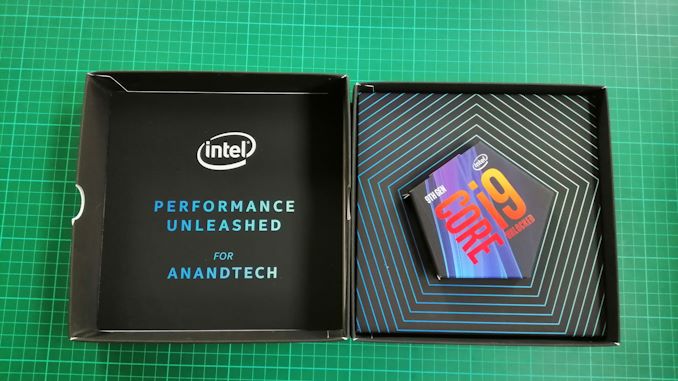
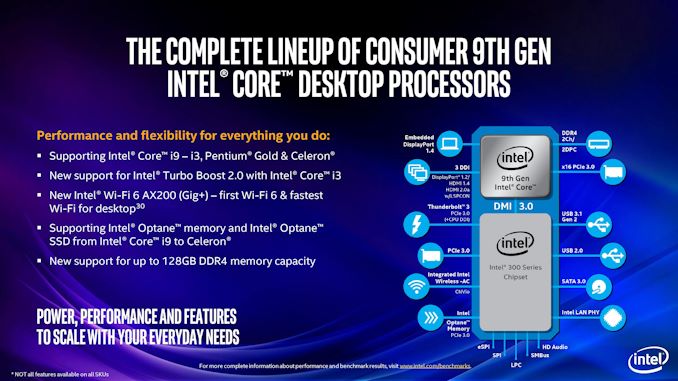
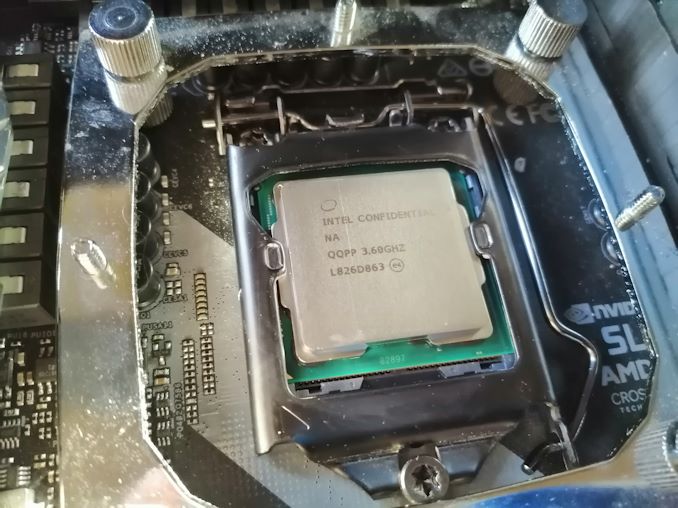
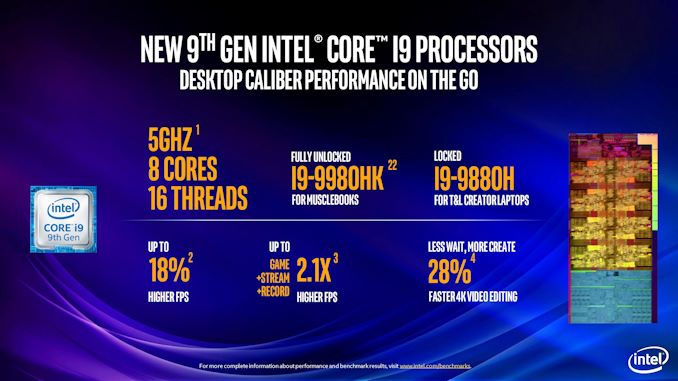
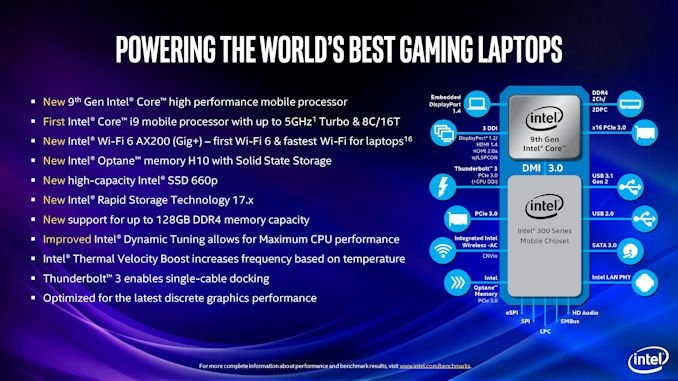
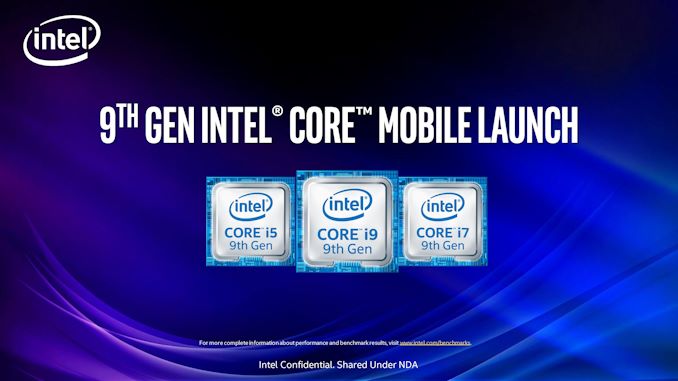
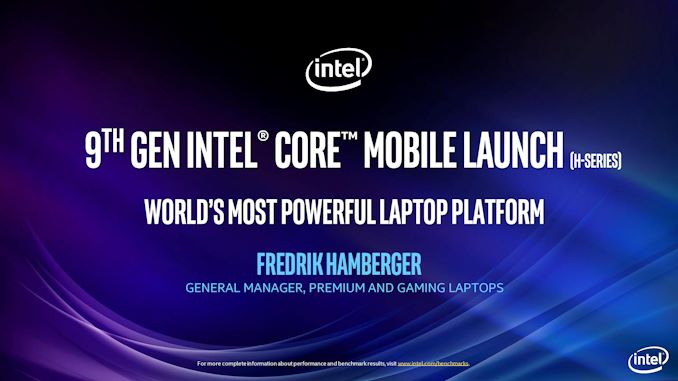
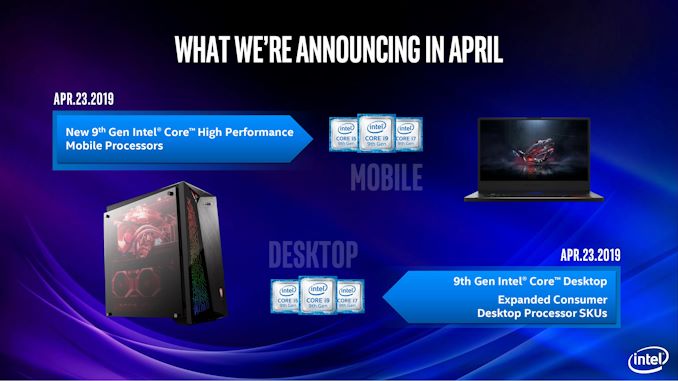
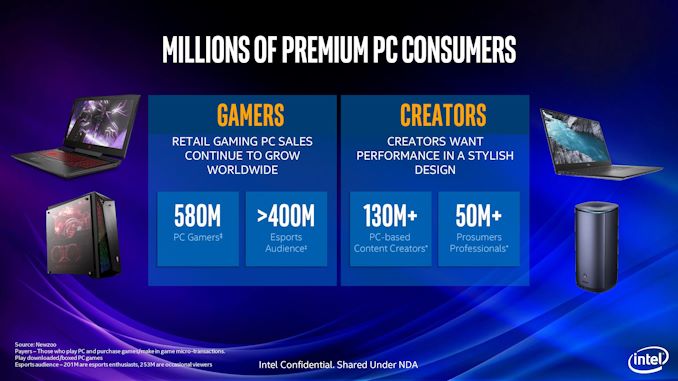
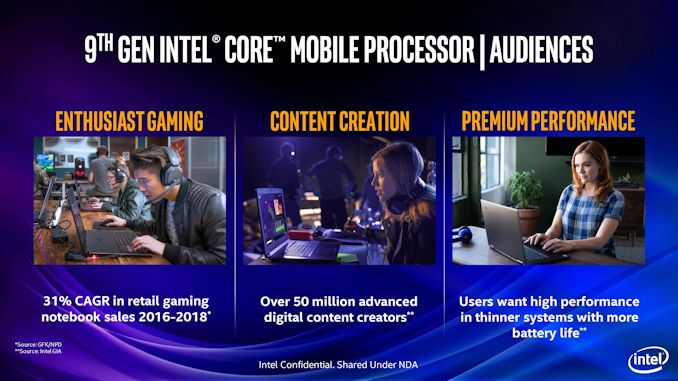
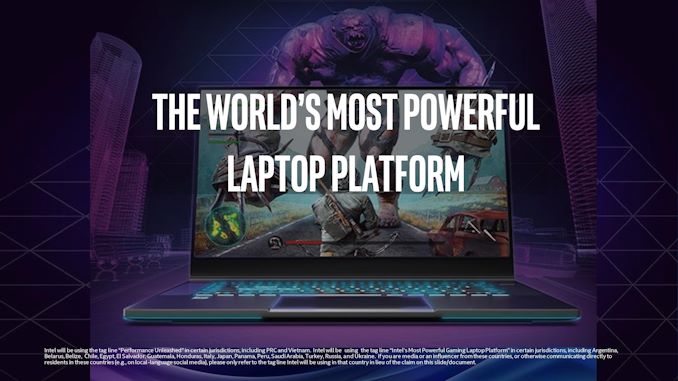
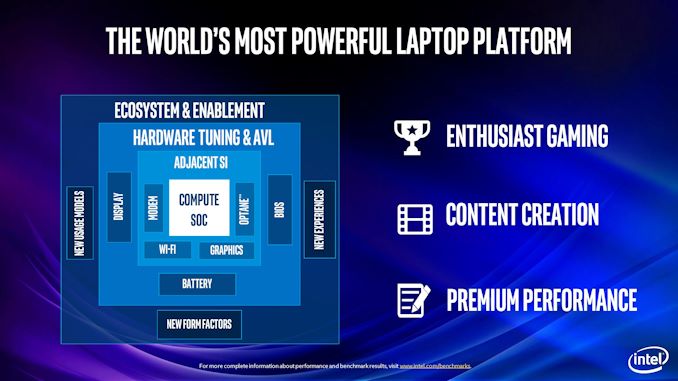
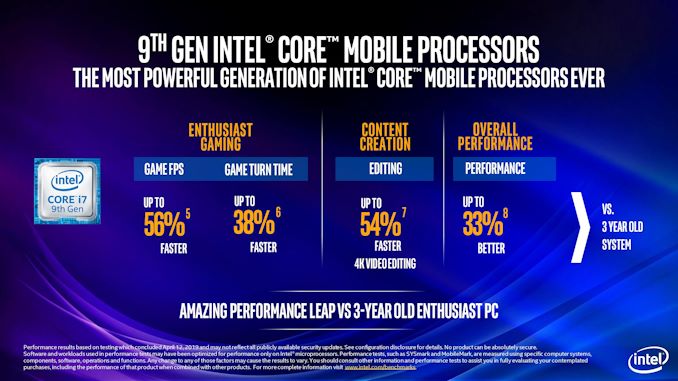

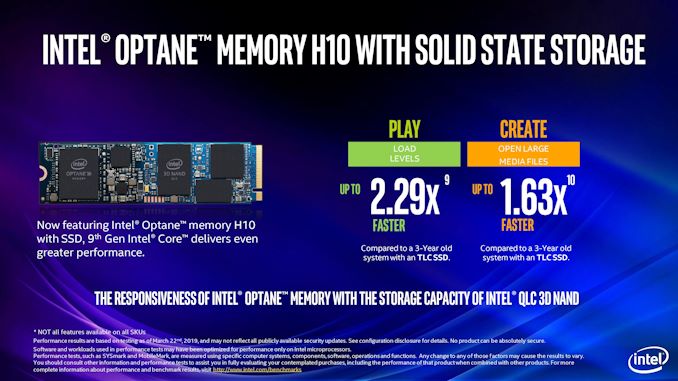

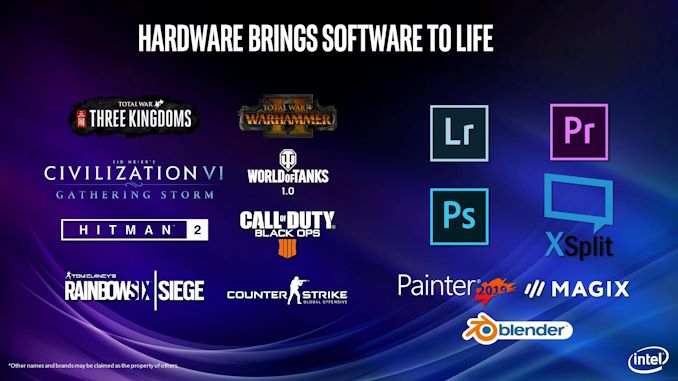
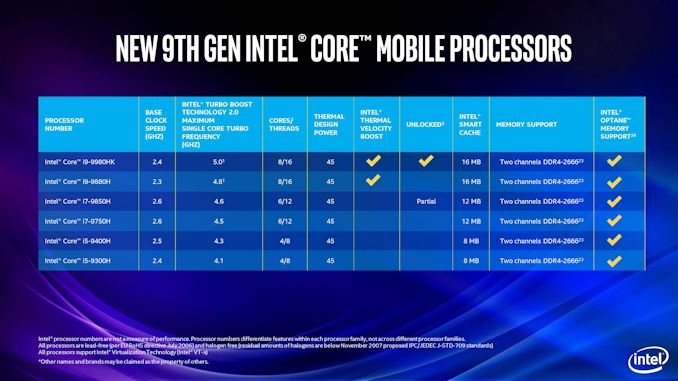
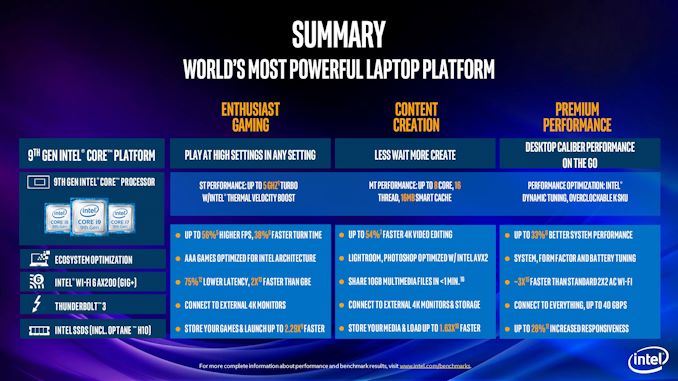
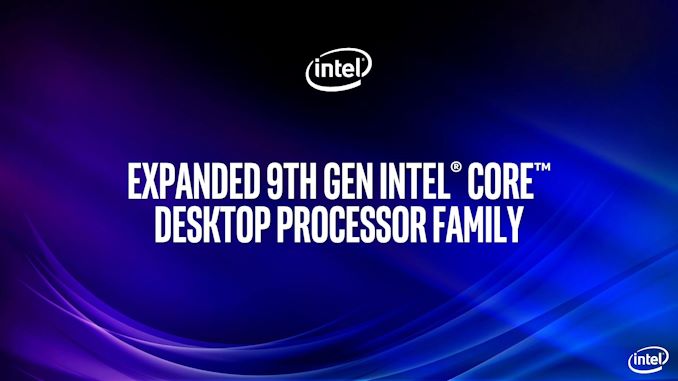

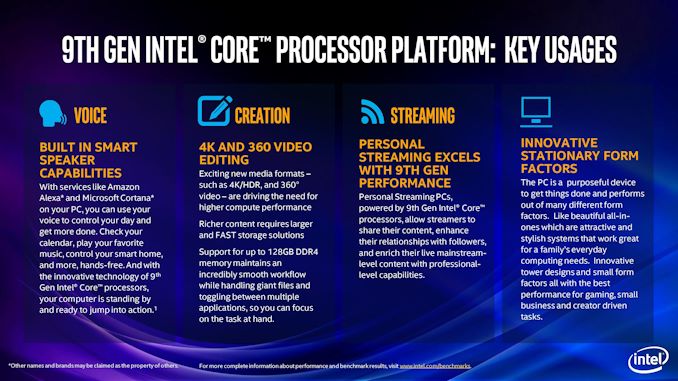
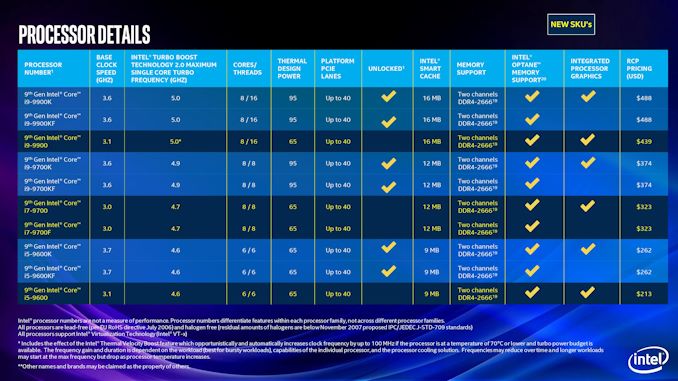
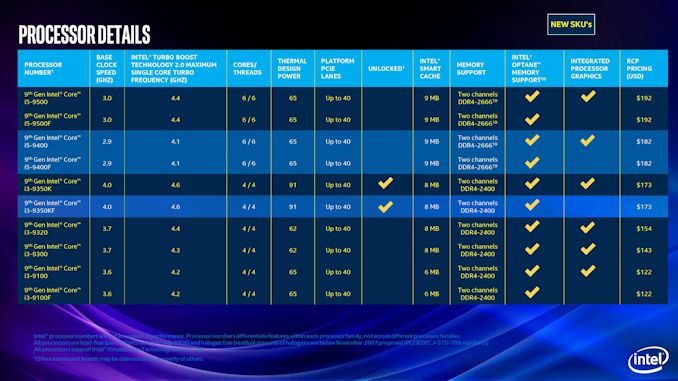
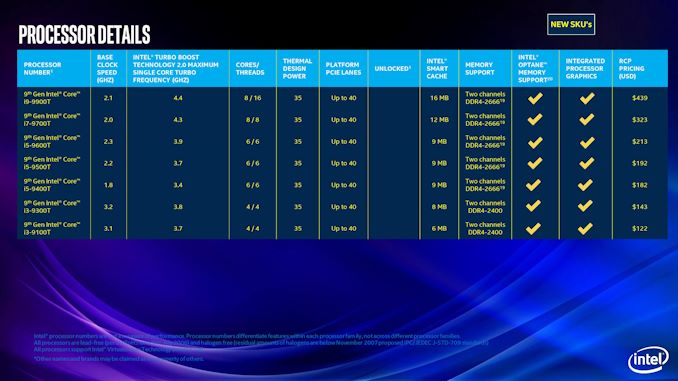
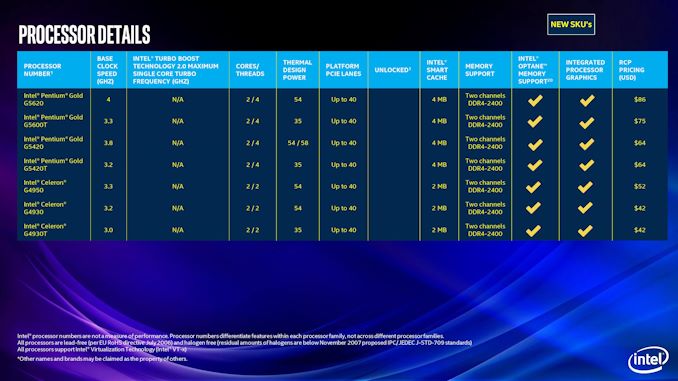
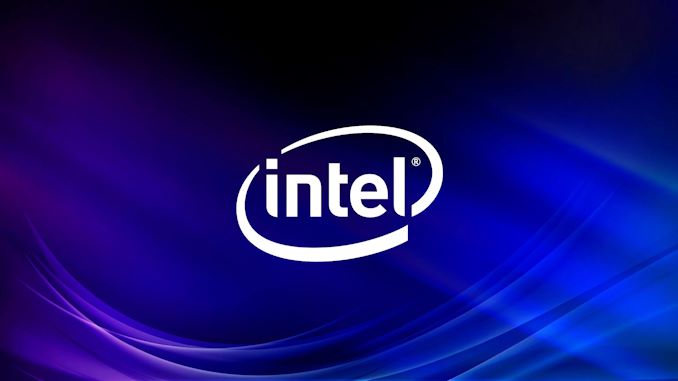
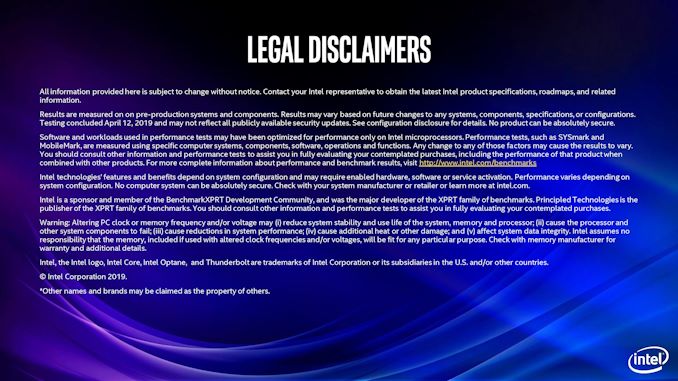
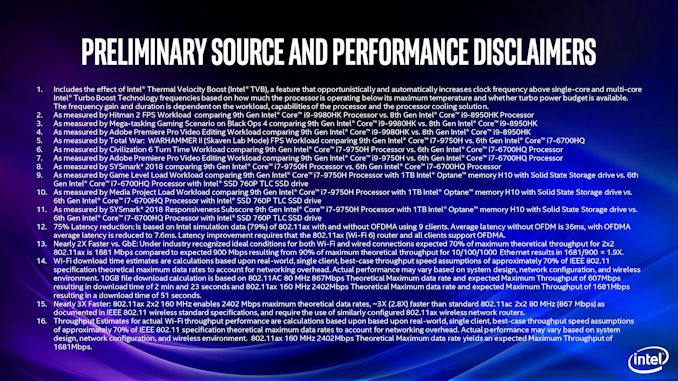



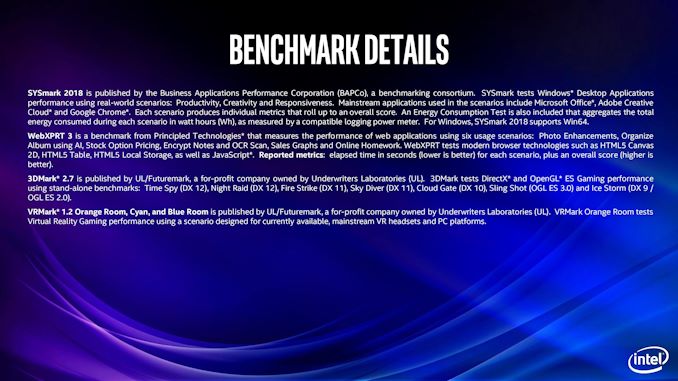
0 Response to "Intel 9th Gen Core Processors All the Desktop and Mobile 45W CPUs Announced AnandTech"
Post a Comment